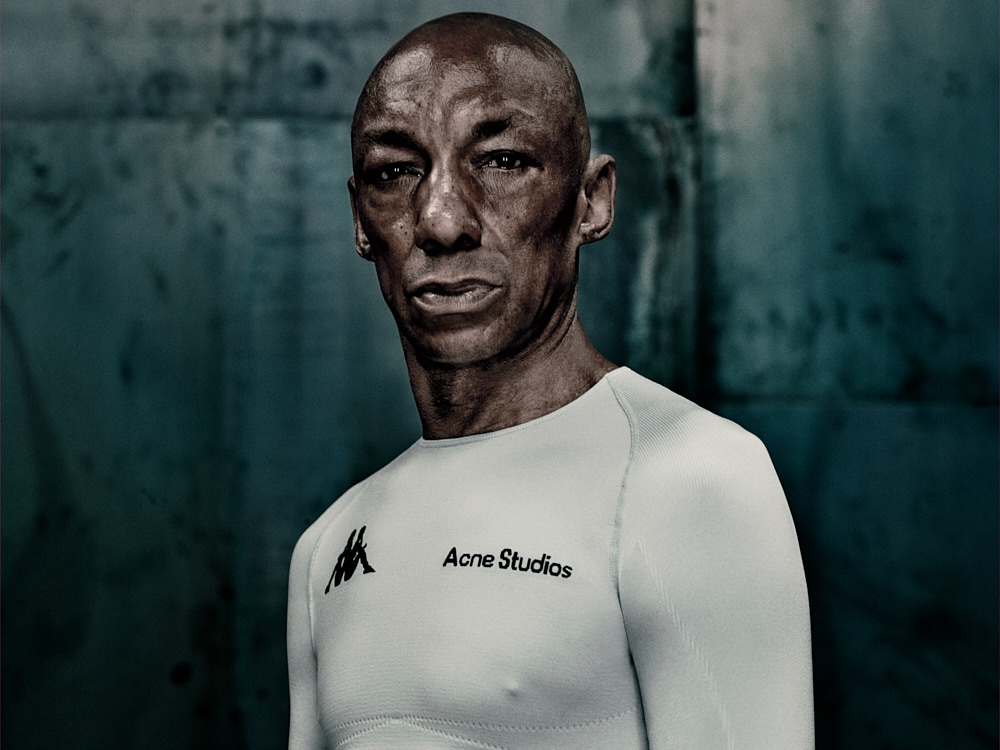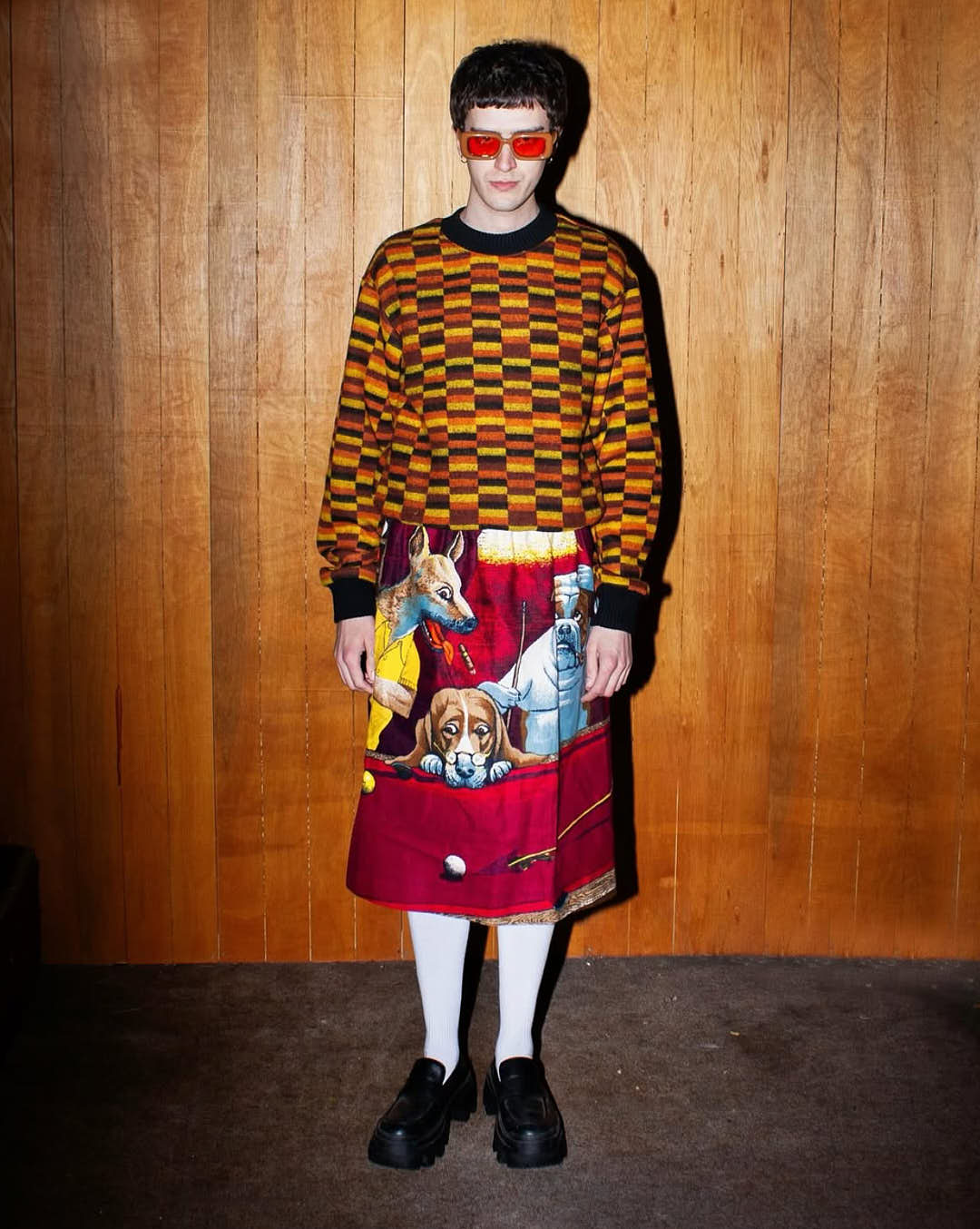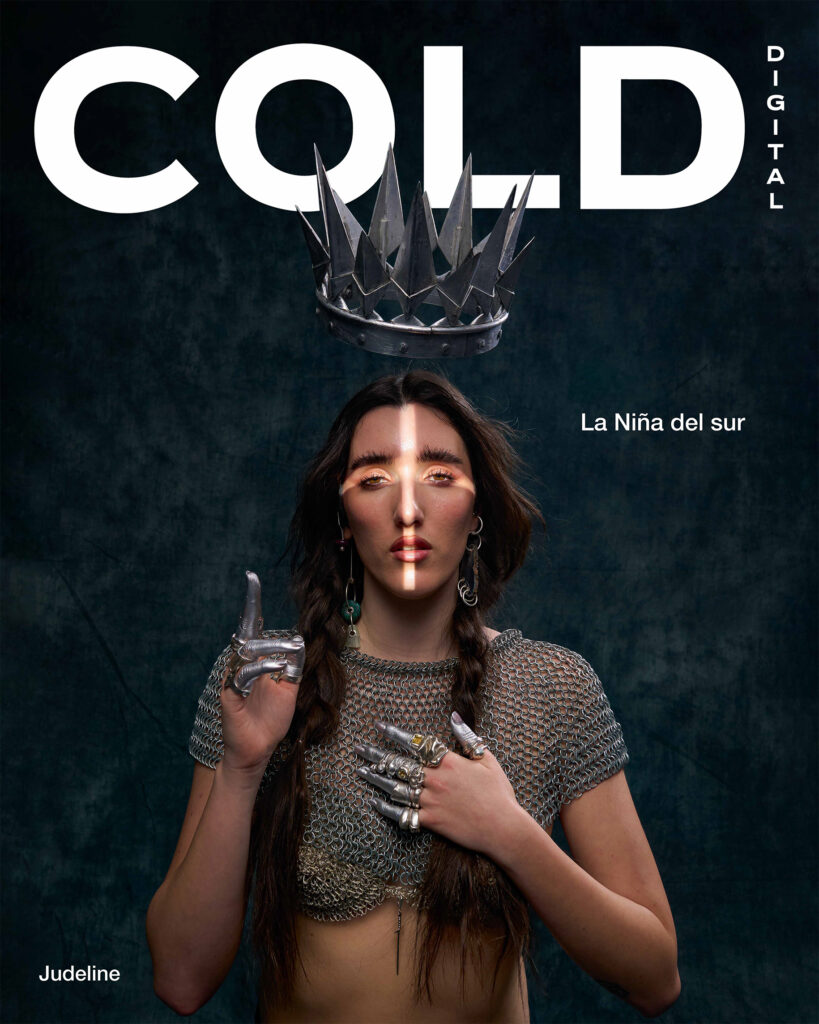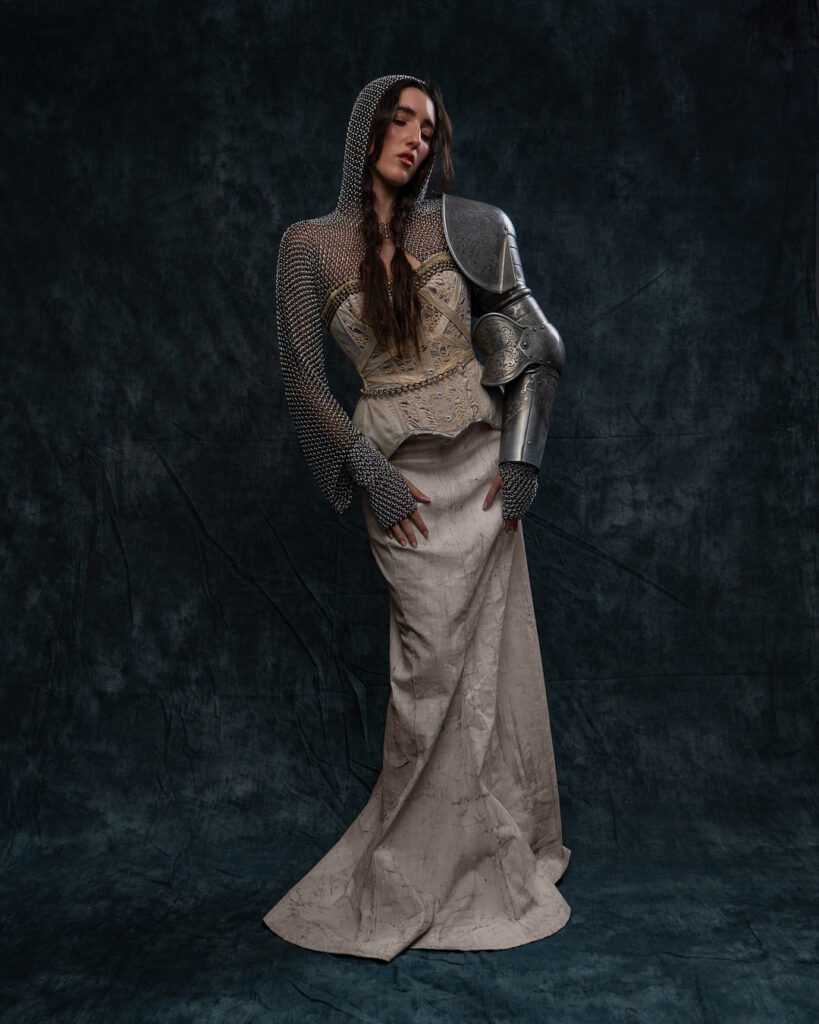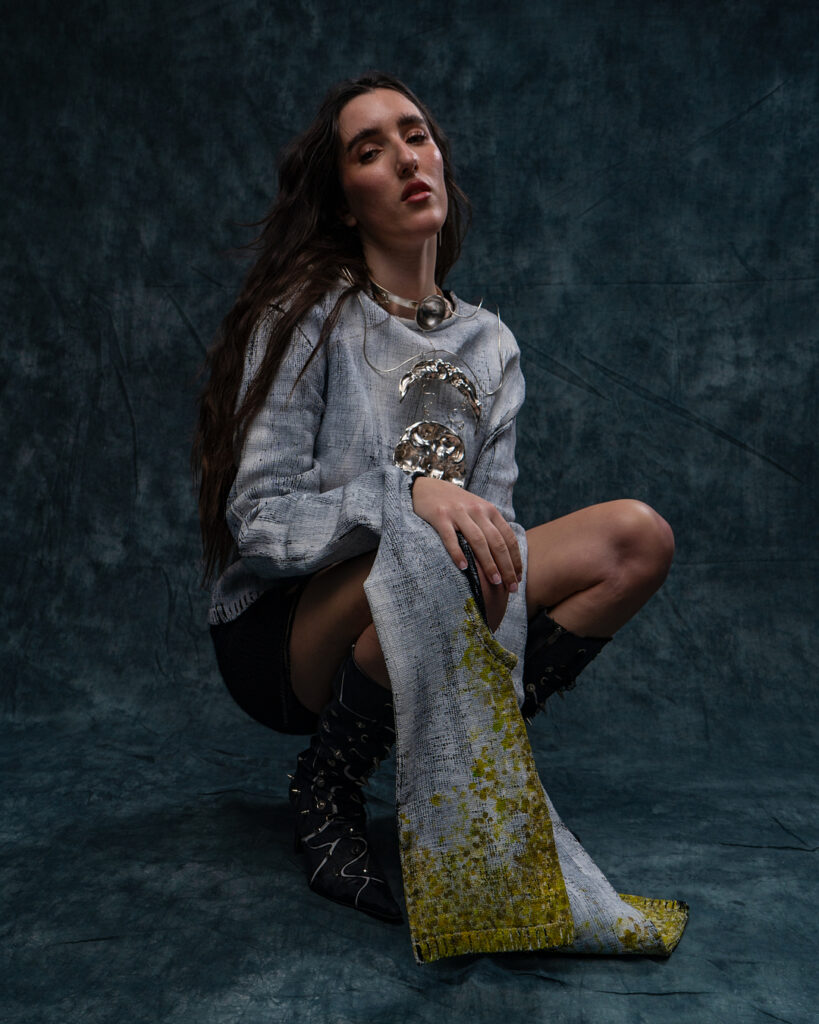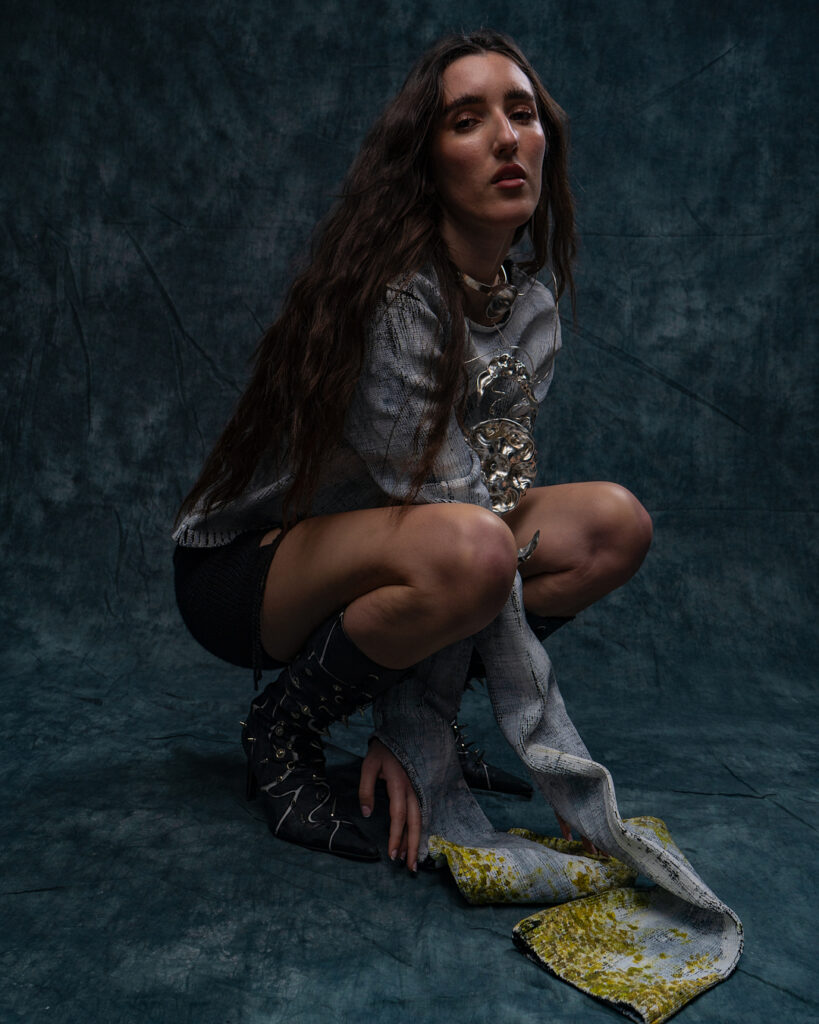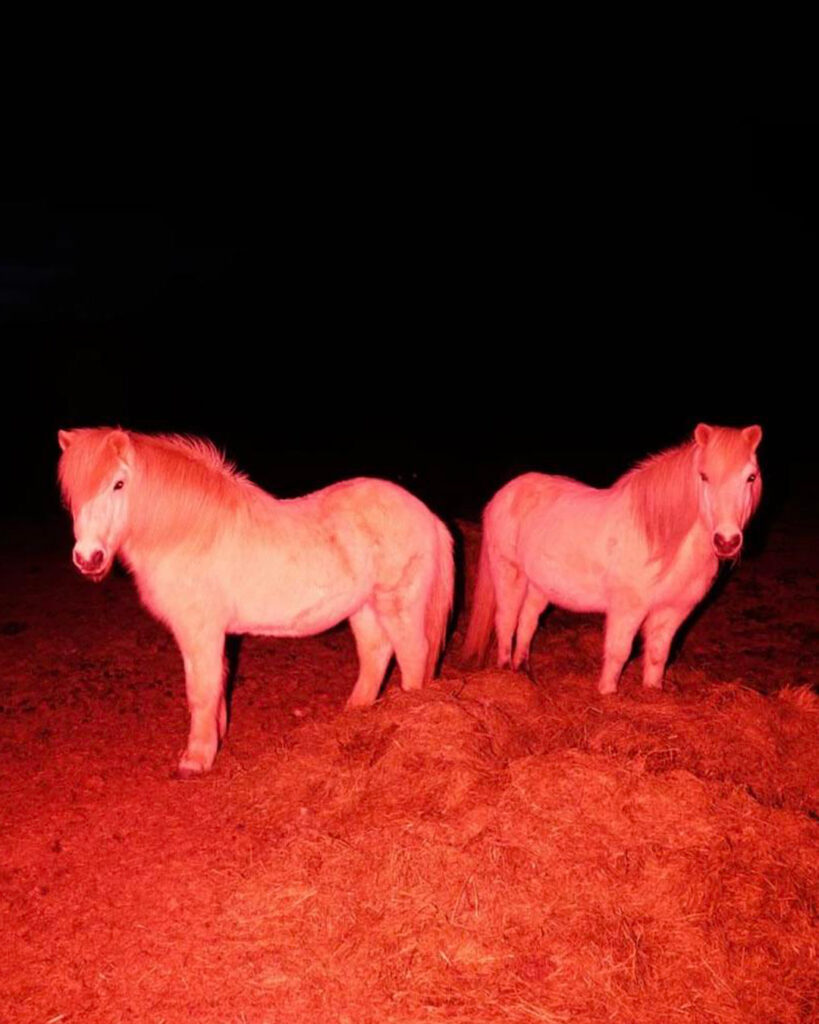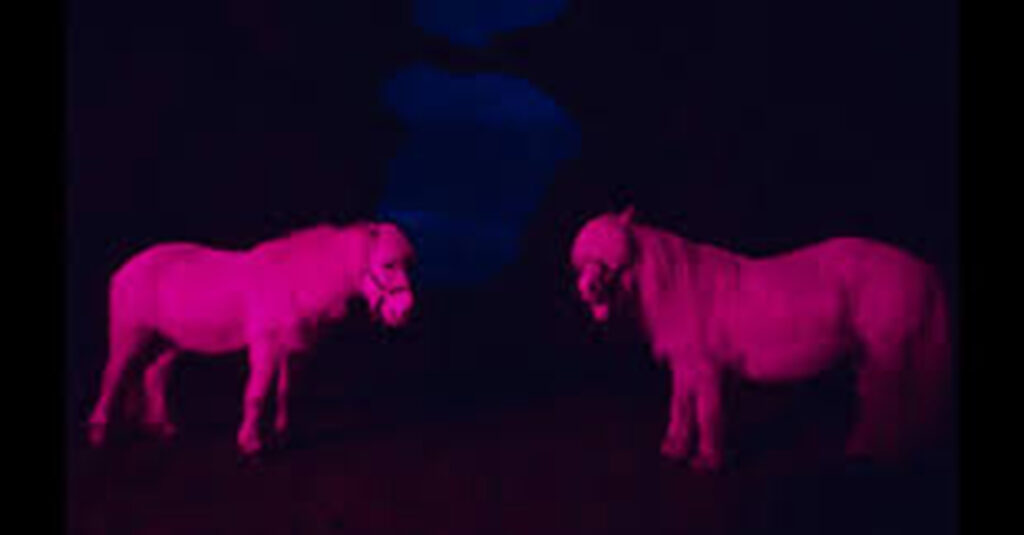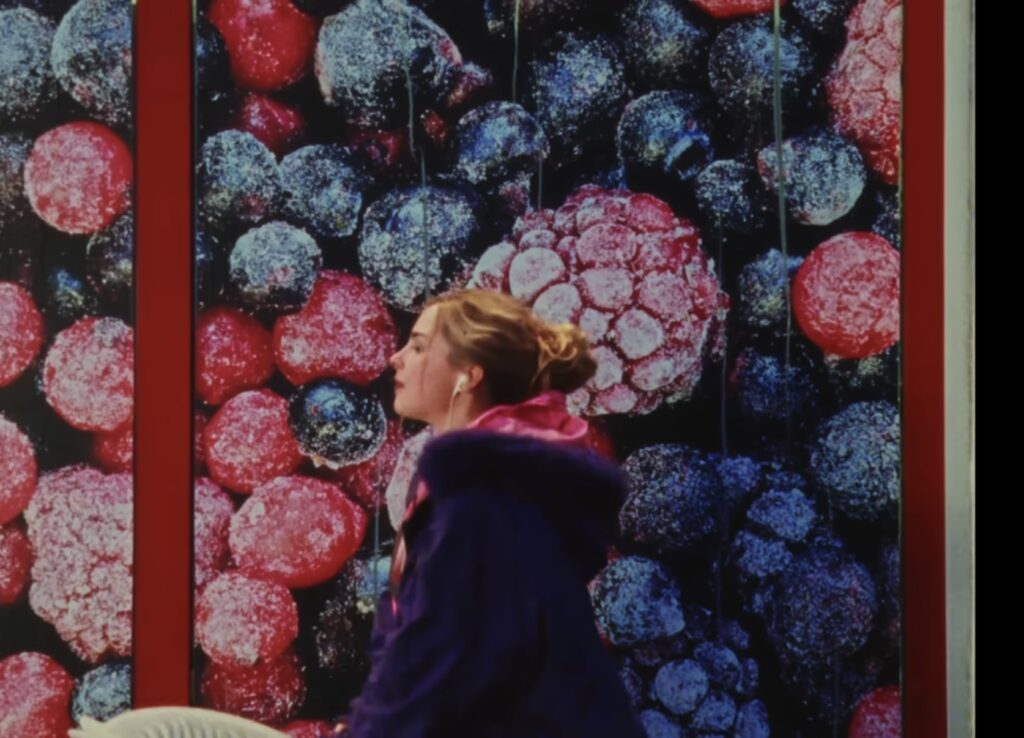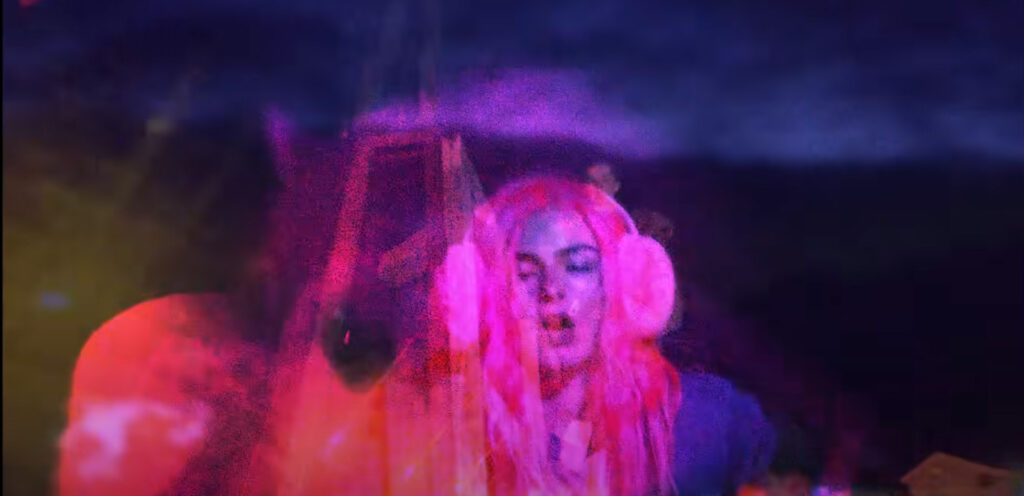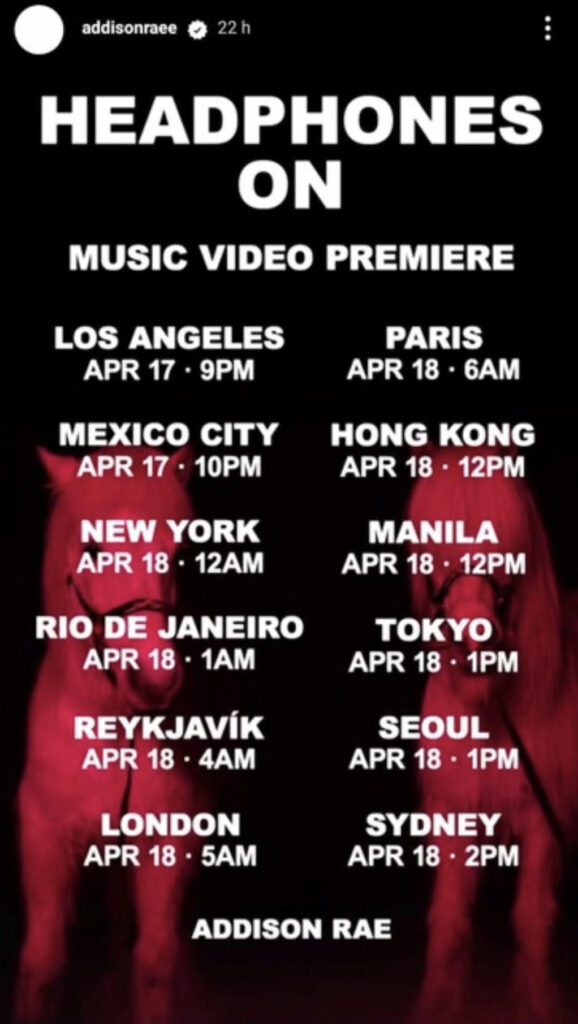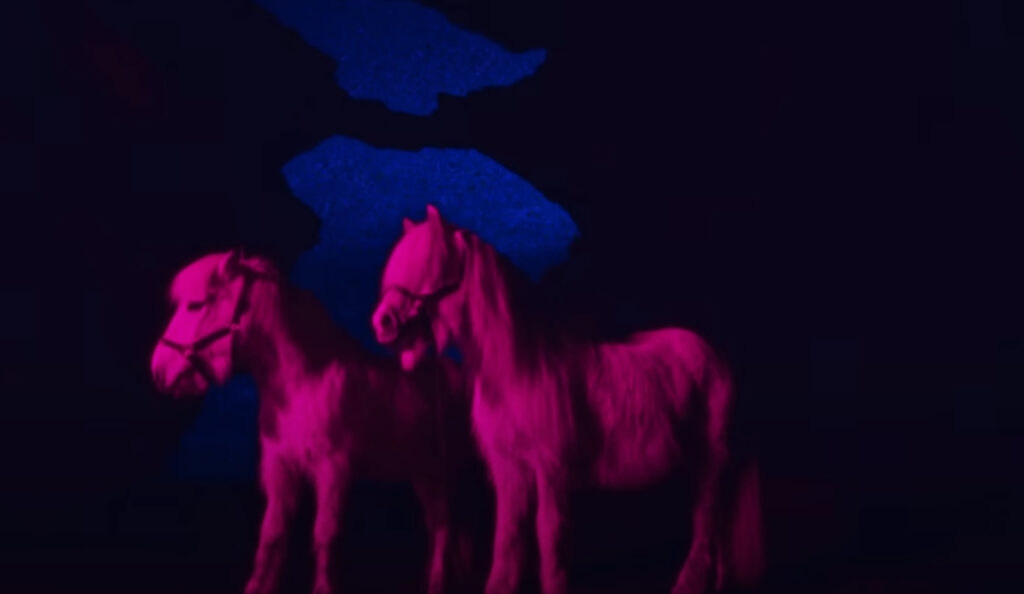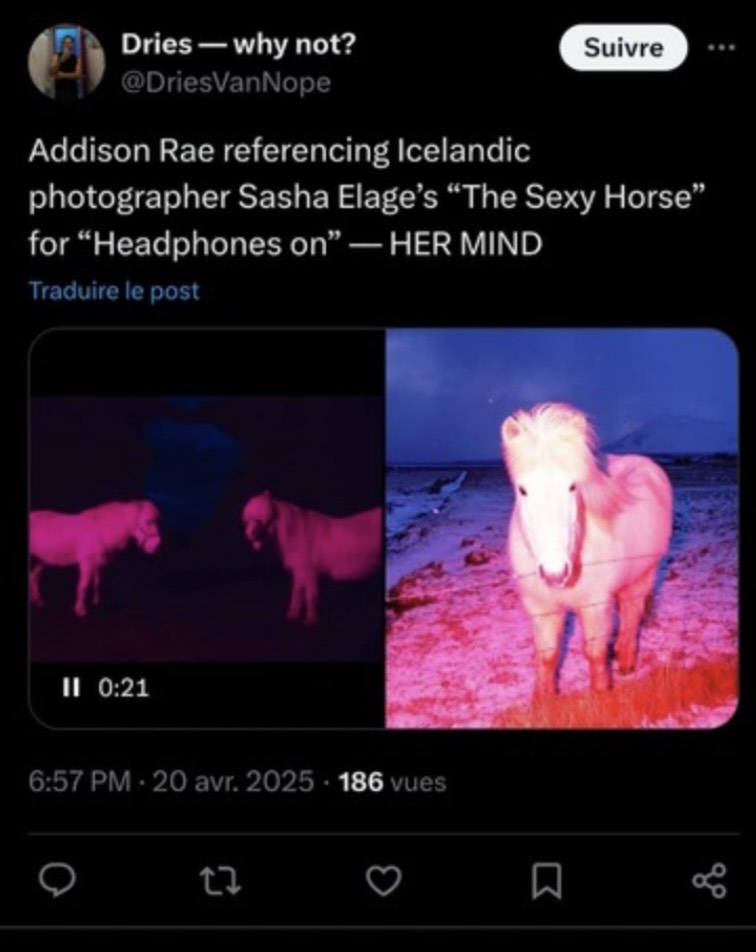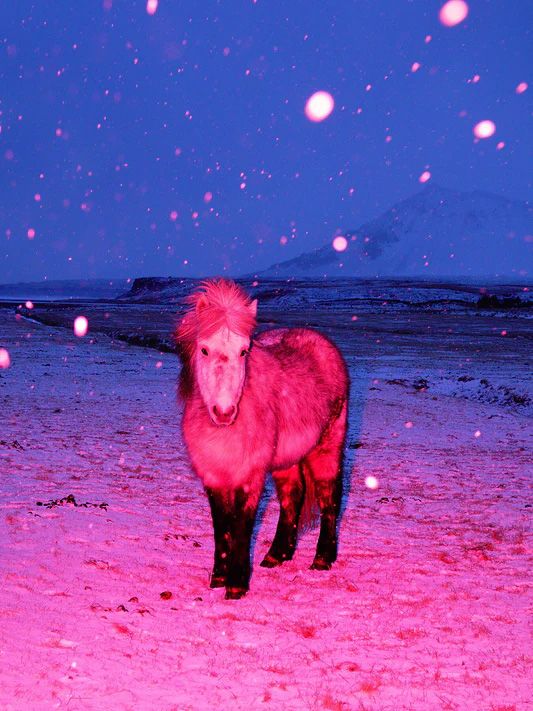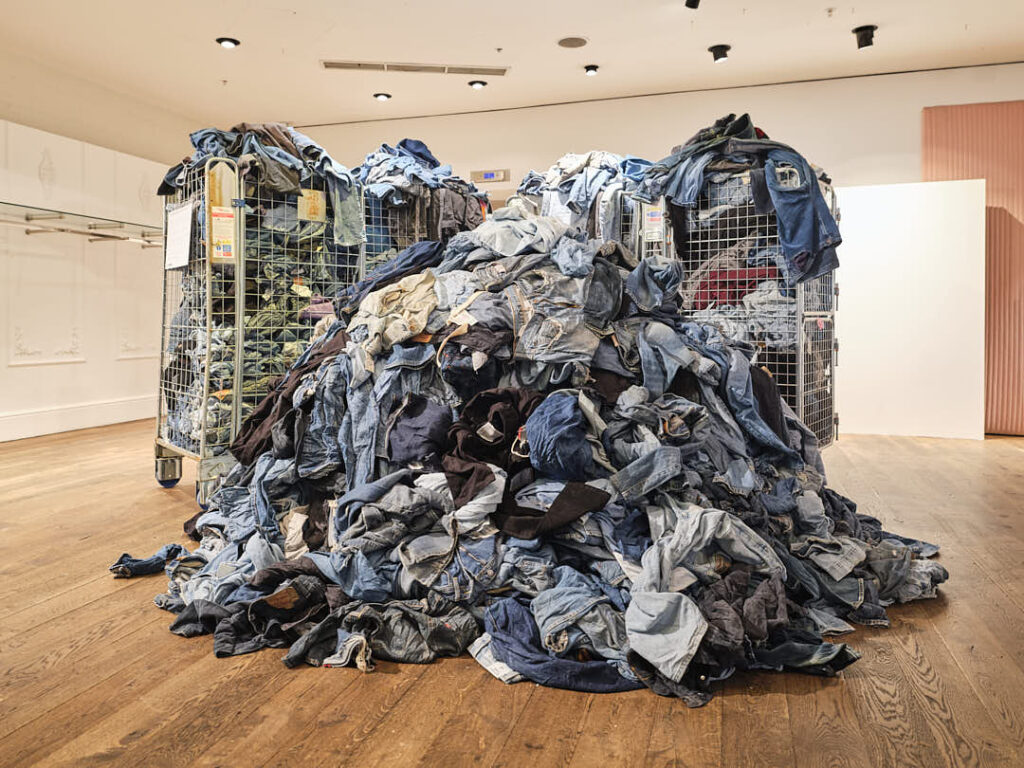
The Dark Side of Denim: E.L.V. DENIM’s Sustainable Solution
Written by Penelope Bianchi
As the fashion industry navigates through the complexities of managing vast amounts of waste–with 1.2m tonnes of clothing annually consigned to UK landfills–it also continues to cater to an ever-growing appetite for novelty. Within this daunting climate, E.L.V. DENIM emerges as an overdue beacon of sustainable practice, transforming the once-dismal fate of deadstock into sustainable luxury. Established in 2018 by visionary founder Anna Foster, E.L.V. DENIM revolutionises the way we think about fashion – with its 100% upcycled collections, which started with the ambitious goal of creating the ‘world’s best-fitting jeans’ using discarded denim, the brand now also designs an extensive range of apparel, from leather to evening wear.

The acronym E.L.V. stands for East London Vintage, where the brand’s story began, highlighting its roots in one of the world’s most transgressive fashion capitals. Despite recent discourse surrounding the ‘death’ of London Fashion Week —a phenomenon highlighted by economic uncertainties and notable shifts like Vivienne Westwood’s move to Paris—London remains a fertile ground for innovation. A Lefty and BoF report highlights that, in comparison to Paris, which garnered 437 million in earned media value, London only achieved 20.9 for Spring/Summer 2025; however, it is precisely in these shifting sands that E.L.V. DENIM finds fertile soil, proving that upheaval can serve as a powerful catalyst for innovation. The brand’s success story is testament to London’s enduring role as a crucible of fashion evolution, where emerging British talents like E.L.V. DENIM can redefine industry norms and carve significant niches.
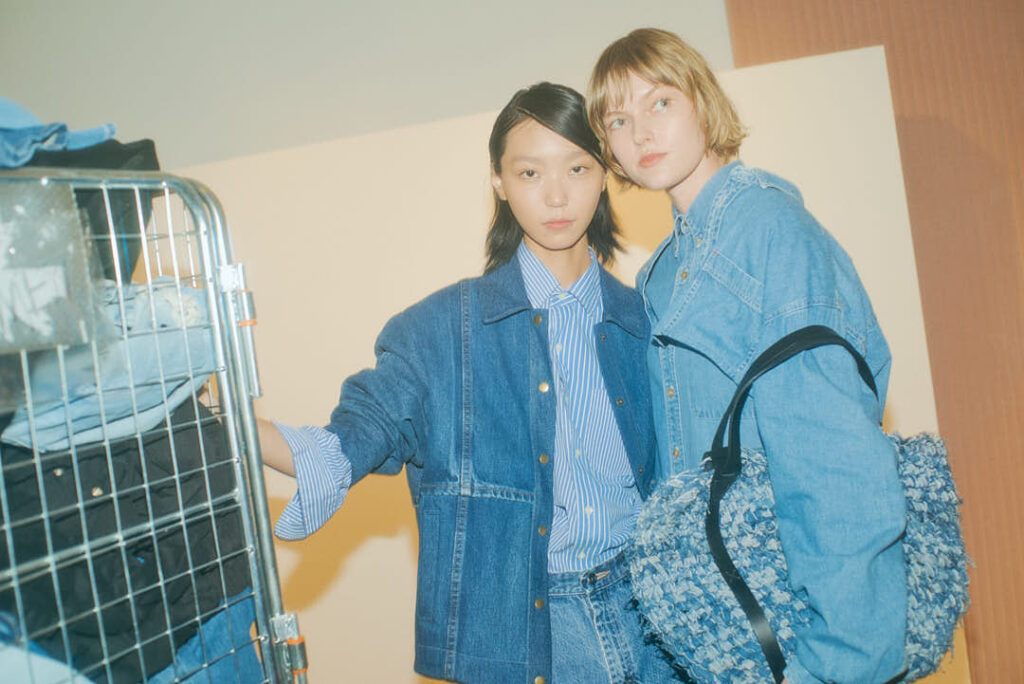
Anna Foster’s project was a result of an awareness of the immense waste generated by the fashion industry mixed with a resolute desire to effect positive change. The denim industry, in particular, is notorious for its substantial environmental impact; it requires enormous amounts of water—over 3,780 litres to produce just one pair of jeans. According to Oxfam, buying one pair of second-hand jeans annually instead of brand new would lead to a decrease in emissions equivalent to flying 365 times less around the globe in an airplane. By upcycling pre-loved denim into luxurious, high-end fashion, E.L.V. DENIM disrupts the traditional life cycle of clothing, setting new benchmarks for what can be achieved with eco-conscious apparel.
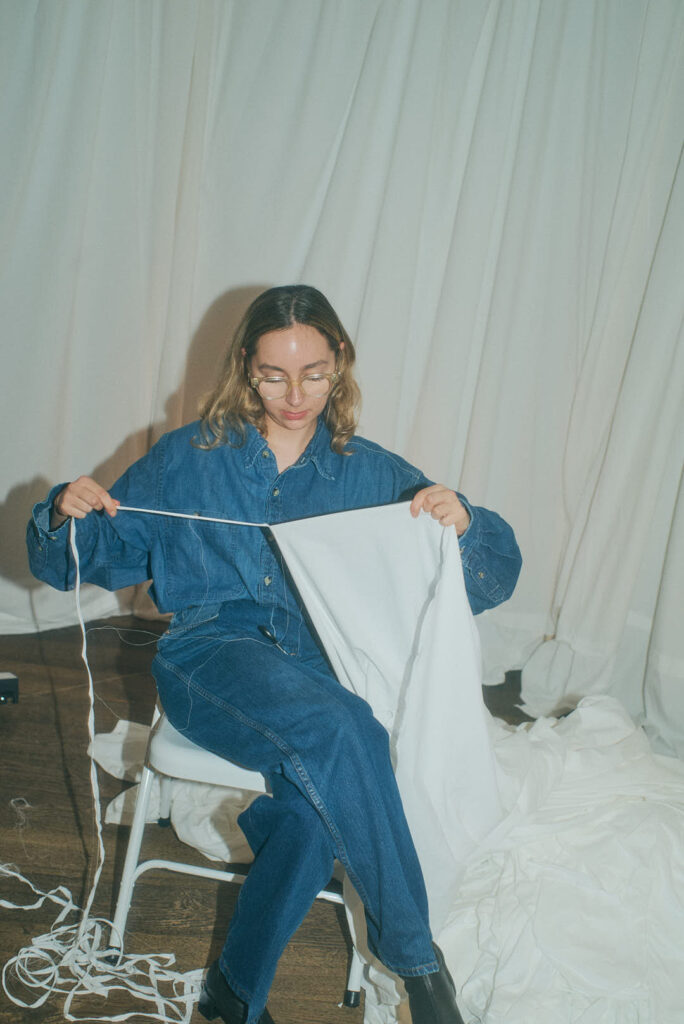
“The Journey,” E.L.V. DENIM’s London Fashion Week presentation, offered an immersive experience into the brand’s creative process through six interactive stations, each detailing a key step in their production process. The stations included the sourcing of vintage denim, water-conserving washing techniques, and the precise grading and matching of fabrics. Other stations showed the intricate cutting and sewing processes, innovative repurposing of scraps and other materials, and the meticulous finishing touches that ensure the brand’s high-quality standards. The room featured a striking visual of 2,000 discarded denim jeans, illustrating the scale of waste transformed into premium garments annually, but also underscored the sustainable ethos at the core of E.L.V. DENIM’s philosophy—a vision passionately upheld by Foster and her team from the outset.
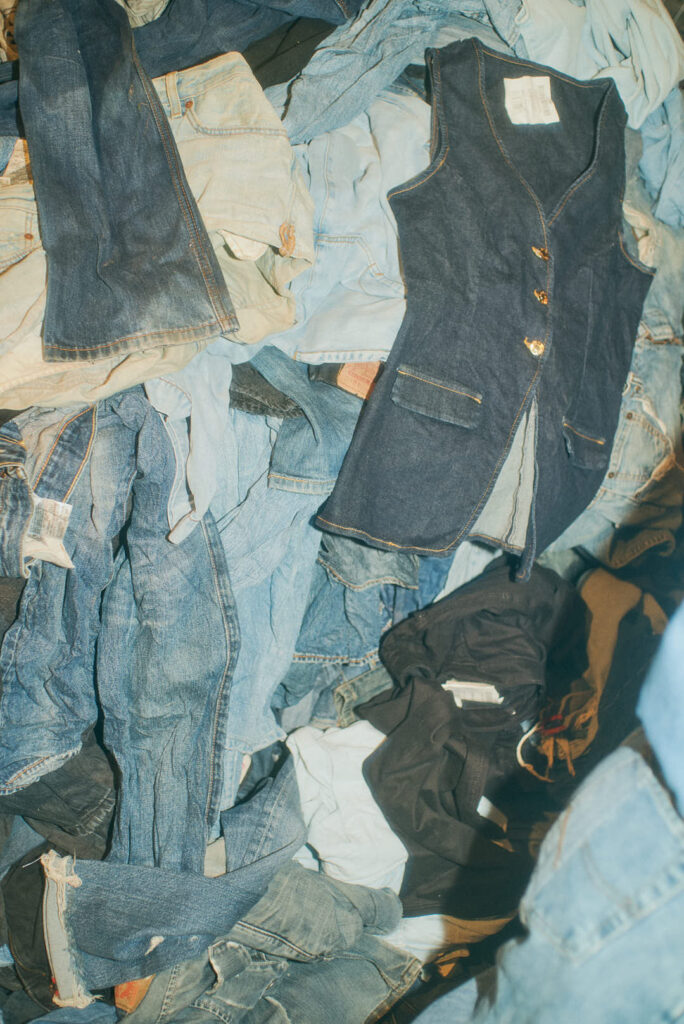
In this interview with Cold Magazine, Anna Foster shares her insights on the evolving landscape of sustainable fashion, delving deeper into the motivations, challenges, and aspirations driving E.L.V. DENIM forward.
CM: E.L.V. DENIM has been leading the way in sustainable fashion for seven years. What motivated you to launch the brand in 2018, and how has your vision evolved since then?
AF: I launched the brand in 2018 with the purpose of making the best fitting jeans in the world that were 100% upcycled from existing jeans. Our presentation, The Journey, reflects the evolution of our brand—from launching with that singular pair of jeans in 2018 to unveiling a full collection today, spanning shirting, tailoring, leather, and evening wear. All 100% upcycled from unwanted garments and textiles.
CM: This is the first fully upcycled brand to be on the official LFW schedule. What does this milestone mean for you and the future of sustainable fashion?
AF: I am immensely proud about what me and my incredible team have achieved. When I started this brand and the research into sourcing vintage jeans, I just couldn’t fathom how much post-consumer waste there was and that very few were doing anything about it. We all thought that recycling was the way forward, but even the most advanced recycling processes have been revealed to be exhaustive in energy and high in chemical usage. Our clear need is to revalue and upcycle what already exists, not downgrade material unnecessarily.
CM: Your presentation, ‘The Journey’, highlights the six core steps of your process. Why was it important for you to showcase this level of transparency?
AF: From the very beginning, we believed—and still believe—that we make the best jeans in the world. Our commitment to upcycling, local manufacturing, and true sustainability sets us apart. Some might call that a bold statement, but we have the processes to prove it. That’s why I created a fully transparent presentation that shows exactly how we do it, and we welcome being questioned! Only by being completely open can we prove who we are, and what we’re striving to become.
CM: E.L.V. DENIM transforms discarded garments into luxury fashion. What are some of the biggest challenges in working exclusively with upcycled materials, and how do you overcome them?
AF: Our challenge is to take thousands of random garments and create a cohesive offering. We can’t send 20 pairs of jeans of one style that are all different shades of blue and different lengths. We have even more expectations than regular design and production; it doesn’t matter if you make the most sustainable garment in the world, if it doesn’t make you look good or feel good it won’t be successful. We have a different challenge if a garment is completely damaged – how can we rescue it as much as possible? Our goal is to leave nothing behind. Our smaller parts are ‘clicked’ out and constructed into sheets of material on which we put our pattern pieces. Small strips are crocheted into bags, and our tiny scraps are turned into paper. However, this challenge is one I happily accept. When you see what the garment or textile looked like when we rescued it and compare it with the final result – that transformation is just inspiring to me.
CM: The collaboration with 1 Hotel Mayfair, where you upcycled bed linens into a white hand crochet dress, is an interesting example of circular design. How do you approach partnerships like these, and what role do they play in your sustainability mission?
AF: Often the source of our ‘material’ comes from common sense innovation. In the case of the bed linen, I had a duvet cover at home that was ripped beyond repair, and I couldn’t bear to just throw it away. In the middle of this dilemma, I asked myself: “What would the hotel industry do?” Unfortunately, most linen is downgraded into rags or insulation for merely having a little pen mark. It’s just about reframing the context; rather than seeing this as a problem, I see 99.9% of the material as a beautiful textile. 1 Hotel was the perfect partner as we have the same values, and they celebrate what we do and want to amplify that.
CM: Your designs now go beyond denim, incorporating tailoring, leather, and eveningwear. What inspired this expansion, and how does your approach to upcycling differ across these materials?
AF: We take the same approach we take to sourcing denim to all the textiles we find. We design in very different ways; unlike traditional methods, we don’t create our designs and then find the material, we do it the other way around. We can only design from what is in front of us, we are literally inspired by waste! Our leather collection is upcycled from the offcuts of furniture manufacturing.
CM: Your brand is known for redefining the fit of denim, even incorporating seam allowances for future adjustments. How does this design philosophy contribute to longevity and circularity in fashion?
AF: Our fit is paramount, and our tailored seams allow our jeans to be altered if required. Not all women (or men) conform to a single shape, so why should your jeans? We also give a generous seam allowance which means the jeans can adapt and evolve with you. I want you to be able to buy your jeans when you are 18 and still wear them when you are 80! If I can create a garment to last a lifetime then I believe that is the definition of luxury. I even had a client who adjusted them to wear them all the way through her pregnancy.
CM: E.L.V. DENIM’s production is rooted in East London, supporting local ateliers and reducing its carbon footprint. How do you balance scalability with maintaining a hyper-local, zero-waste model?
AF: When your business is born from a zero-waste and low carbon ethos, scaling always goes hand in hand with this; it will never be compromised. Our growth plan is to treat global markets as local markets. We want to create two E.L.V. DENIM studios in our key growth areas in Europe and the US, where we can source, produce and distribute locally. This way we are beginning to stop the global transport of textile waste and provide infrastructure for circular manufacturing economies outside of East London.
CM: ‘Sustainability’ has become somewhat of a buzzword in the fashion industry. What do you think needs to change in mainstream fashion to make true circularity a reality?
AF: Legislation. And holding people accountable for it. We work hard to set new standards, and it’s sadly undermined by brands saying they use ‘deadstock’ or ‘rework’ to imply that they are sustainable. We have created a glossary of terms with Vogue Business as a starting point and with the introduction of the Green Claims Directive I hope that this will separate those that are doing good, as opposed from those who want to benefit from the current buzzwords.
CM: What’s next for E.L.V. DENIM? Are there any innovations or collaborations you’re particularly excited about?
AF: We are launching a series of pop ups starting with Great Portland Street on 20th March –heralding our first ever brick and mortar where we can carry on our storytelling and inspire others with our designs. Pop in and say hi!


E.L.V. DENIM is reshaping fashion, setting a necessary precedent for the industry’s sustainable future. Under Anna Foster’s leadership, the brand has turned upcycling into luxury, significantly reducing the environmental toll associated with traditional denim production. Foster’s approach reframes our perspective on waste, seeing potential where others see disposal; this welcome mindset shift is something we should all embrace, repurposing our worn-out clothes rather than discard them. By intertwining flawless craftsmanship with ecological principles, E.L.V. DENIM demonstrates that high fashion can indeed drive positive change, hopefully inspiring a wave of innovation across the industry. With “The Journey”, each interactive station beautifully detailed the transformational steps from waste to wear, reinforcing the brand’s commitment to transparency. Fashion and environmentalism should not be mutually exclusive, and Foster’s work serves as a persuasive call to action: it challenges the fashion world, and therefore us as its consumers, to not just rethink its current practices, but to actively embrace sustainability as the cornerstone of design and production.




